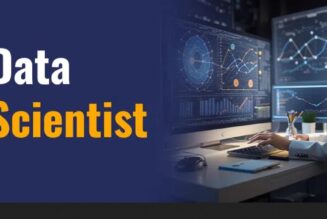As technology is growing along the developmental line, artificial intelligence (AI) has now become the most defining tool in the modern era, especially in the field of data science. The combination of AI and data science has not only changed how data is being analyzed but it has also transformed the possibilities of the latest analysis. With the prospective of ChatGPT and some other automated tools, AI is evolving its potential beyond 2024.
Data Science has stepped into every possible industry, from hospitality to politics, and it benefits businesses in achieving their targets. The economic turbulence of 2024 is a testimonial of how data science can help businesses save precious time and resources in the coming future.
So, for today’s article, let’s discover how AI has already been integrated into data science. Some you might know, while other people might not expect! Will your data science job be affected? Dive in to find out.
According to Forbes, The global artificial intelligence market size is expected to expand at a compound annual growth rate (CAGR) of 37.3% from 2023 to 2030. It is expected to reach $1,811.8 billion by 2030
AI in data science- Powerful Use Cases
Automated Machine Learning
Automated Machine Learning is described as bringing the functionality of using machine learning to data into the hands of the expected consumer owing to its capacity to automate the process. It means that such functions as an ultra-modern computer calculation built with diverse, more distinct algorithms and predictions, which previously necessitated exact skills, can now be used by a huge population.
AutoML tools can easily perform data transformation, parameter tuning, and algorithm selection and sometimes even result in explanations that shorten the time needed for data analysis and enhance the accessibility for newcomers in the field of data science.
Enhanced Data Visualization
Artificial Intelligence has also extensively contributed to enhancing the techniques of data visualization and also makes it more insightful and interactive. AI has contributed to the data visualization platforms and previously collected big data can now be examined for patterns as well as correlations and then presented clearly. It also helps data scientists to express the results in a way that is easy to recognize even by the business executive and at the same time facilitates the executives to decide based on the complex information.
Ethical AI and Bias Mitigation
Possibly the most significant area where AI is changing the management of data science is the rising attention paid to ethical AI and minimizing bias. Artificial Intelligence is not biased and algorithms are biased as the data given to them there is focused on creating algorithms that can avoid and eliminate biases. This is very essential especially when it comes to using Artificial Intelligence in decision-making processes that affect people’s lives for example in employment, credit granting, and policing.
Predictive Analytics
Predictive analytics is a branch of the latest analytics that forecasts future outcomes by utilizing historical data combined with data mining methods, statistical modeling, and machine learning. To gain valuable insights from this data, experienced data scientists make use of deep learning and machine learning algorithms to analyze patterns and make predictions about future events. These statistical techniques are neural networks, logistic and linear regression models, and decision trees.
Chatbots help in data exploration
A chatbot for data analytics uses artificial intelligence and machine learning processes to interact with users, answer queries, and offer valuable insights that are based on data analysis. It accesses significant data sources, processes information, and provides insights in a conversational format.
Task Automation
Data science engages using data and statistical methods to extract valuable insights and make informed decisions. Artificial Intelligence plays an important role in this process by automating numerous tasks and helping data scientists in their work. It is used to automate repetitive and time-consuming processes such as data collection, cleaning, and analysis, helping data scientists to focus on complicated jobs that benefit in enhance their data science career.
Improved Accuracy
Artificial Intelligence can influence data science by enhancing the accuracy and speed of data analysis. AI systems can proficiently and accurately examine huge amounts of data, saves data scientists time and help them to focus on highly complex tasks. Diverse companies use vast data and data set models to make useful and effective business decisions. AI algorithms can assess huge amounts of data with optimum accuracy and speed, facilitating data scientists to generate accurate predictions and explore patterns that might otherwise go unrecognized.
Faster Analysis
AI algorithms can analyze huge datasets at a faster rate compared with humans. This speeds up the data analysis process and facilitates real-time insights. Industries and organizations will be able to make faster decisions that are based on precise data.
As AI capabilities enhance, the process of analysis will increase rapidly. This will help managers to incorporate data in every aspect of their businesses, especially the pens which need faster data analyses.
Conclusion:
Artificial intelligence (AI) has transformed the world of data science, automating time-consuming tasks such as data preparation and pattern detection, thus helping data scientists to focus on very difficult tasks. AI improves predictive analytics, helps in data explanation using chatbots, improves fraud prevention, and aids in accurate and automated recruitment. Furthermore, it accelerates unskilled tasks and promotes transparency with open-source models, helping businesses maintain ethical standards and gain valuable insights into complex data relationships.

